Curved adhesions mediate cell attachment to soft matrix fibres in three dimensions
- PMID: 37770566
- PMCID: PMC10567576
- DOI: 10.1038/s41556-023-01238-1
Curved adhesions mediate cell attachment to soft matrix fibres in three dimensions
Abstract
Integrin-mediated focal adhesions are the primary architectures that transmit forces between the extracellular matrix (ECM) and the actin cytoskeleton. Although focal adhesions are abundant on rigid and flat substrates that support high mechanical tensions, they are sparse in soft three-dimensional (3D) environments. Here we report curvature-dependent integrin-mediated adhesions called curved adhesions. Their formation is regulated by the membrane curvatures imposed by the topography of ECM protein fibres. Curved adhesions are mediated by integrin ɑvβ5 and are molecularly distinct from focal adhesions and clathrin lattices. The molecular mechanism involves a previously unknown interaction between integrin β5 and a curvature-sensing protein, FCHo2. We find that curved adhesions are prevalent in physiological conditions, and disruption of curved adhesions inhibits the migration of some cancer cell lines in 3D fibre matrices. These findings provide a mechanism for cell anchorage to natural protein fibres and suggest that curved adhesions may serve as a potential therapeutic target.
© 2023. The Author(s).
Conflict of interest statement
The authors declare no competing interests.
Figures
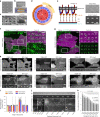
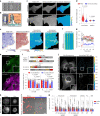
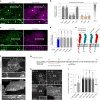
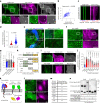
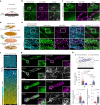

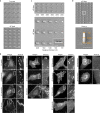
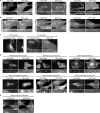
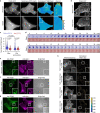
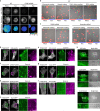


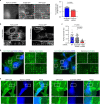

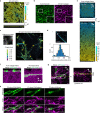
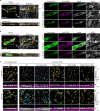
Update of
-
Curved adhesions mediate cell attachment to soft matrix fibres in 3D.bioRxiv [Preprint]. 2023 Mar 19:2023.03.16.532975. doi: 10.1101/2023.03.16.532975. bioRxiv. 2023. Update in: Nat Cell Biol. 2023 Oct;25(10):1453-1464. doi: 10.1038/s41556-023-01238-1. PMID: 36993504 Free PMC article. Updated. Preprint.
Similar articles
-
Curved adhesions mediate cell attachment to soft matrix fibres in 3D.bioRxiv [Preprint]. 2023 Mar 19:2023.03.16.532975. doi: 10.1101/2023.03.16.532975. bioRxiv. 2023. Update in: Nat Cell Biol. 2023 Oct;25(10):1453-1464. doi: 10.1038/s41556-023-01238-1. PMID: 36993504 Free PMC article. Updated. Preprint.
-
Focal adhesions, reticular adhesions, flat clathrin lattices: what divides them, what unites them?Am J Physiol Cell Physiol. 2025 Jan 1;328(1):C288-C302. doi: 10.1152/ajpcell.00821.2024. Epub 2024 Dec 9. Am J Physiol Cell Physiol. 2025. PMID: 39652817 Review.
-
Canonical and non-canonical integrin-based adhesions dynamically interconvert.Nat Commun. 2024 Mar 7;15(1):2093. doi: 10.1038/s41467-024-46381-x. Nat Commun. 2024. PMID: 38453931 Free PMC article.
-
A cytoskeletal clutch mediates cellular force transmission in a soft, three-dimensional extracellular matrix.Mol Biol Cell. 2017 Jul 7;28(14):1959-1974. doi: 10.1091/mbc.E17-02-0102. Epub 2017 Jun 7. Mol Biol Cell. 2017. PMID: 28592635 Free PMC article.
-
Podosome-type adhesions and focal adhesions, so alike yet so different.Eur J Cell Biol. 2008 Sep;87(8-9):491-506. doi: 10.1016/j.ejcb.2008.02.012. Epub 2008 Apr 15. Eur J Cell Biol. 2008. PMID: 18417250 Review.
Cited by
-
Force-bearing phagocytic adhesion rings mediate the phagocytosis of surface-bound particles.Nat Commun. 2025 Jan 24;16(1):984. doi: 10.1038/s41467-025-56404-w. Nat Commun. 2025. PMID: 39856073 Free PMC article.
-
Saddle curvature association of nsP1 facilitates the replication complex assembly of Chikungunya virus in cells.Nat Commun. 2025 May 8;16(1):4282. doi: 10.1038/s41467-025-59402-0. Nat Commun. 2025. PMID: 40341088 Free PMC article.
-
Coaching ribosome biogenesis from the nuclear periphery.bioRxiv [Preprint]. 2024 Jun 22:2024.06.21.597078. doi: 10.1101/2024.06.21.597078. bioRxiv. 2024. PMID: 38948754 Free PMC article. Preprint.
-
Plasma membrane curvature regulates the formation of contacts with the endoplasmic reticulum.Nat Cell Biol. 2024 Nov;26(11):1878-1891. doi: 10.1038/s41556-024-01511-x. Epub 2024 Sep 17. Nat Cell Biol. 2024. PMID: 39289582 Free PMC article.
-
Acute chromatin decompaction stiffens the nucleus as revealed by nanopillar-induced nuclear deformation in cells.Proc Natl Acad Sci U S A. 2025 May 13;122(19):e2416659122. doi: 10.1073/pnas.2416659122. Epub 2025 May 9. Proc Natl Acad Sci U S A. 2025. PMID: 40343993
References
-
- Klapholz B, Brown NH. Talin—the master of integrin adhesions. J. Cell Sci. 2017;130:2435–2446. - PubMed
Publication types
MeSH terms
Substances
Grants and funding
LinkOut - more resources
Full Text Sources
Other Literature Sources
Research Materials

